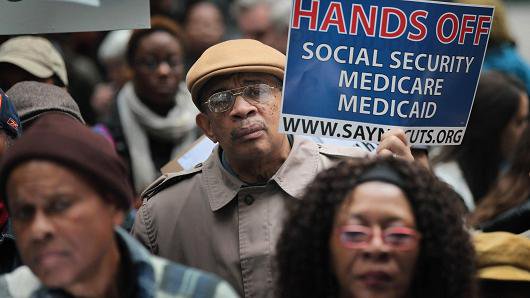



The basic deal increases the federal budget by $80 billion for the next two years, $50 billion in the first year and $30 billion in the second year. About half of the increase is earmarked only for the Pentagon, the remainder for unspecified “discretionary spending.” Those increases come at the cost of massive cuts to Medicare and Social Security payments to disabled workers (SSDI). The deal also includes additional funding of $32 billion dollars in the “Overseas Contingency Operations Fund” (OCO), to fund the ongoing U.S. imperialist aggression against Syria, Iraq and Afghanistan. (Huffington Post Oct. 26)
Increased funding to expand imperialist war
The Military Times, which caters directly to the U.S. Armed Forces, reports on Oct. 27 even larger increases to the Pentagon under the new deal. It projects that the 2016 and 2017 Pentagon budgets would each be increased by $25 billion, to a total of $548 billion in 2016 and $551 billion in 2017, not counting the OCO funding specifically for the ongoing U.S. wars. The Military Times reports an additional $59 billion a year for the next two years, to fund the attacks on Syria, Afghanistan and Iraq.
At the same time as the budget announcement of massive increases in military funding, the Pentagon is recommending increasing the deployment of U.S. soldiers on the ground in Iraq and Syria. The Oct. 27 Washington Post reports that the plan would put U.S. Special Operation forces, commandos, on the ground in Syria and increase the role of U.S. troops in Iraq, a serious escalation. Simultaneously, the secretary of defense seeks to expand U.S. attacks in Afghanistan.
The increased U.S. force in the region comes as Russian forces have reportedly had widespread success in pushing back the Islamic State in Syria and assisting the Syrian government against U.S.-backed insurgents.
Austerity for disabled and elderly
The increases to Pentagon spending for imperialist wars will be paid for directly by slashing needed support for disabled and elderly workers. The money comes from two main cuts, one to Social Security disability benefits, which provide monthly payments of a modest income to workers who can no longer work; the other to Medicare, which provides health insurance to elderly and retired workers, as well as some disabled workers.
Another major cut to workers’ benefits in the proposed budget is to extend a reduction in the amount that Medicare will pay to doctors and medical providers for their services. The 2 percent cut to doctors and medical providers will result in drastically limiting access to health care, especially in poor and rural areas. In these areas, especially in parts of the U.S. South, where there are greater percentages of older and disabled workers, hospitals have been closing rather than accept cuts to their profits.
The Department of Homeland Security, which oversees the Transportation Security Administration, announced March 7 that…
The Popular Front for the Liberation of Palestine’s statement “Keep going on the path toward…
Hundreds of Clevelanders came out on March 8 — International Working Women’s Day — for…
Richard Glossip, on death row in Oklahoma since 1997 for his alleged role in the…
The 11th National Conference of the All India Central Council of Trade Unions (AICCTU), held…
Download the PDF. Download B&W version. Protests resist MAGA attacks Thousands protest around U.S. to…